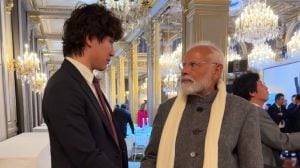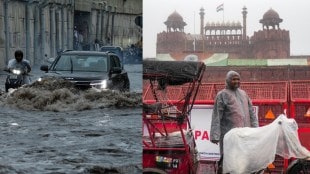Once a humble symbol of India’s independence movement, Khadi is spinning a whole new tale in the world of fashion. No longer confined to Gandhian simplicity or dusty rural shelves, the handspun fabric is now making bold statements on India’s most prestigious runways.
Khadi special
At the Khadi special showcase organised by the Fashion Design Council of India (FDCI) in New Delhi recently, khadi was recontextualised for the modern era. A whole new range of reimagined khadi was showcased in tailored kurtas, deconstructed jackets, ballooned skirts, silk sarees in adaptable patterns.
“Khadi is now part of mainstream fashion. Bapu’s Khadi is today travelling from village to glamour,” said Manoj Kumar, chairman, Khadi and Village Industries Commission (KVIC), Ministry of Micro, Small and Medium Enterprises, Government of India, who attended the event as the guest of honour.
Khadi’s revival
He credited the fashion revival to Prime Minister Narendra Modi’s directive to position khadi not just as a fabric, but “an idea and inspiration,” captured in the slogan: “Khadi for Nation, Khadi for Fashion.”
“It’s a celebration of the living revolution which for the first time since Independence is not only connecting the youth of the country with its heritage with full enthusiasm and self-pride, but is also redefining it as ‘Khadi for Nation, Khadi for Fashion’,” said Kumar.
Under the KVIC’s direction, khadi has undergone a strategic makeover. The collection features a spectrum of innovative textures, experimental silhouettes, and eco-friendly finishes that meet both aesthetic and ethical standards. KVIC is also investing in infrastructure to support this transformation like a revamped e-commerce portal on the cards to make khadi more accessible globally.
Kumar emphasised, “Khadi is not just the identity of Swadeshi, it has become the driving force of a self-reliant India. It is no longer limited to villages; it has become the first choice of global fashion designers.”
While it has carved a niche in fashion shows to start-ups and international forums, the new experiments are now the new normal for the world of Khadi, he said. “Now we need a tech-forward, design-driven khadi ecosystem with AI integration,” he added.
In the past, strategic tie-ups with brands like Raymond, Aditya Birla Group, and Arvind Mills have made khadi into large-scale retail, while fashion designers have been fuelling the movement. Divyam Mehta and Suket Dhir brought in architectural layering and natural dyes. Shruti Sancheti presented Gond-inspired sarees and breathable, seasonless garments. Rohit Bal, Anju Modi, Payal Jain, and Poonam Bhagat reworked khadi into luxury prêt wear, exploring hues like mustard, indigo, and ivory with embroidery, hand-painting, and tailoring that flattered modern silhouettes.
Khadi’s progress is directly attributed to the government’s ‘vocal for local’ and ‘Atma Nirbhar Bharat’ campaigns, which have nudged both urban millennials and conscious consumers to see khadi as fashionable, aspirational, and future-ready.









